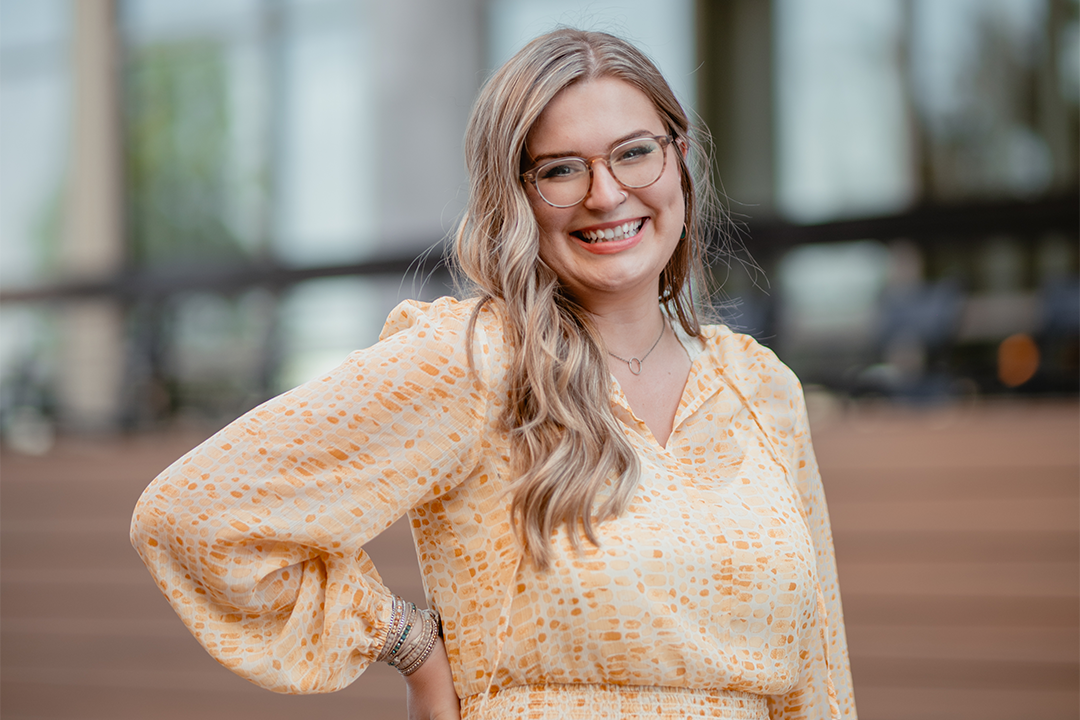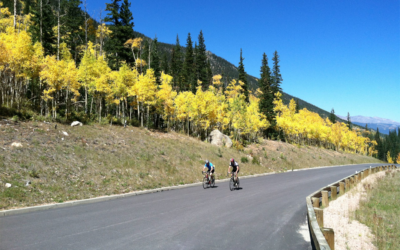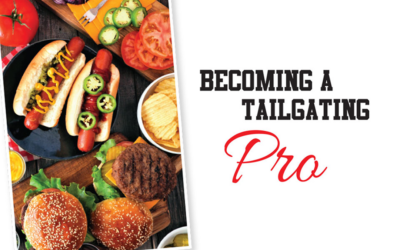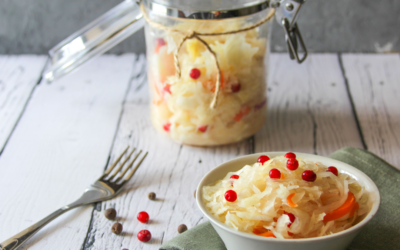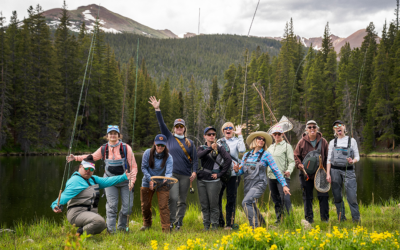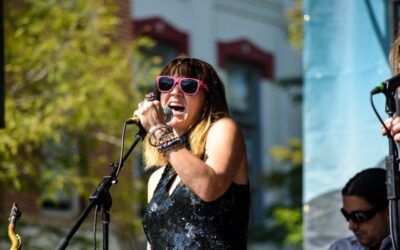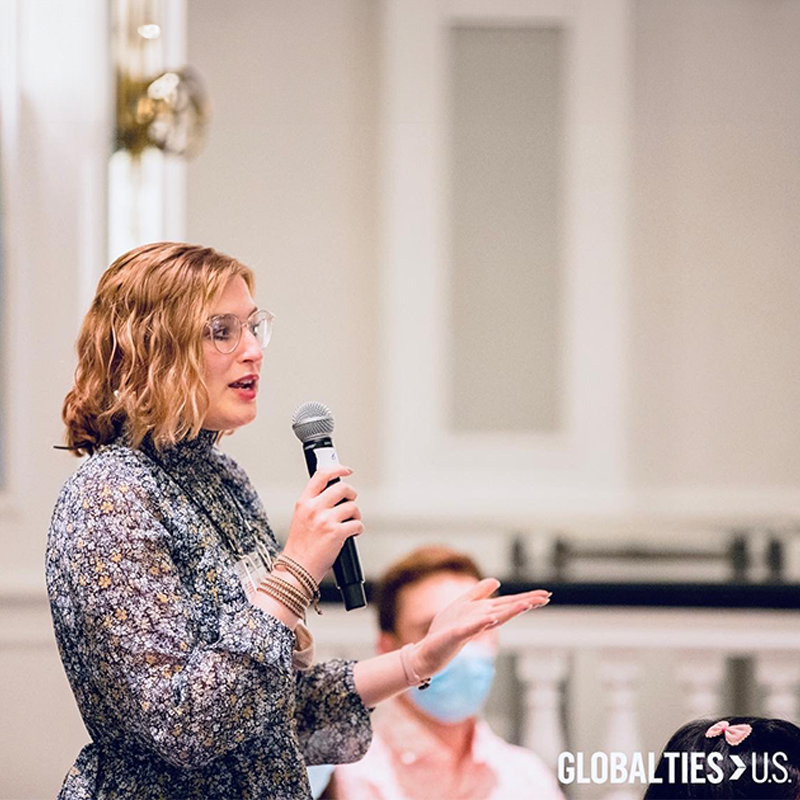
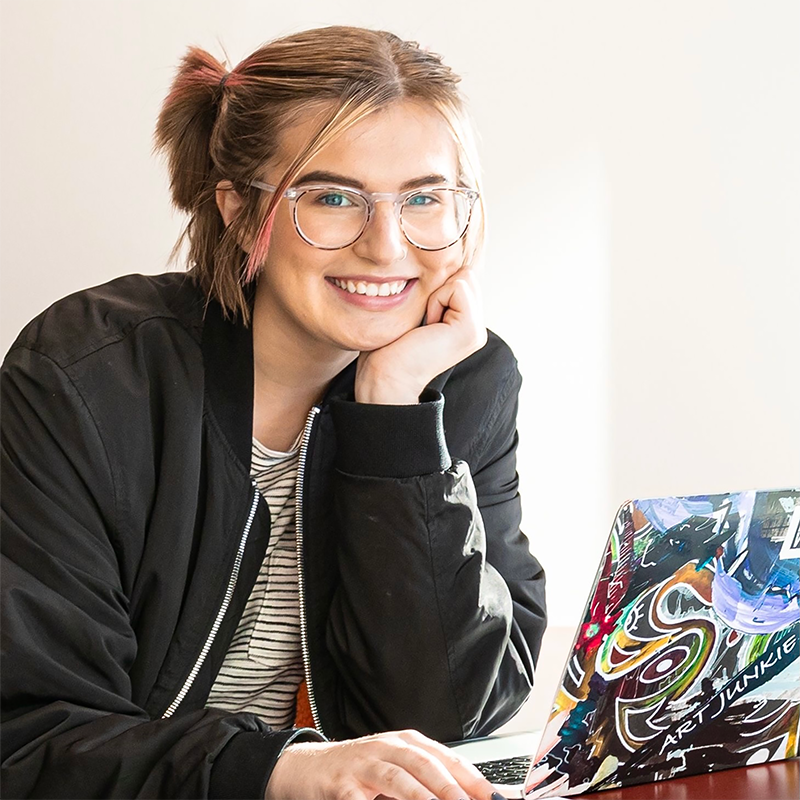
24 years old • Fort Collins
Artist, author, higher education content writer at Direct Development
What’s your occupation? Explain your career, accomplishments and professional highlights.
“You have a vested interest in building bridges, not ladders. That’s why we hired you.” The U.S. Commissioner General said this to me when I was a youth ambassador at the 2020 World Expo. These days, I produce content for mission-oriented educational programs, but I’m also a disability advocate recognized by The Kennedy Center for my artwork, a youth media literacy specialist and an adult coloring book author who thinks meditation and creativity are inextricably linked. It might seem hard to weave a narrative between those roles unless you know that “building bridges, not ladders” is the thread.
Tell us about yourself, your history and how you came to be where you are now.
I’ve wanted to be an artist since I was 3, and 15 years later, I was one of the youngest people ever named an Emerging Young Artist through The Kennedy Center in Washington D.C. I’m really lucky to bring my artistic spirit into each stage of life. Right now, I’m a content writer for universities nationwide, and I just had a solo exhibition at Bean Cycle Roasters in Fort Collins, which is my 21st exhibition. Colorado is my forever home, and disseminating creativity through my work is how I can pay it forward for its beauty.
Tell us something unique about you.
When I was 12, I created my first WordPress blog. I only wanted to publish one 500-word essay, called “Marriage Equality From a Kid’s Perspective,” which retroactively highlights how so much of my journey has been influenced by being autistic and finding joy in creativity. People don’t hear this narrative enough: I’m really proud of being autistic because it has allowed me to think a bit differently. There’s value in that, career-wise.
What do you consider the biggest accomplishment or challenge you’ve overcome, either professionally or personally?
Being selected as a youth ambassador (out of so many amazing young people) for the World Expo in Dubai was a big highlight for me. I represented the U.S. and met with people from all over—and I also left my position early. Leaving early might not seem like an accomplishment, but I learned more about my own community than I did Dubai’s. I learned that “building bridges, not ladders” at home is where I shine.
Where do you see yourself in five years? In 10 years?
“The limit does not exist.” If you can forgive my “Mean Girls” reference, the only thing I can predict about my future is that it will be creative and meaningful. I’m eager to bring joy to more people beyond myself, whether that’s with my book, “Body Space,” my work with youth media literacy (The Poynter Institute, NAMLE), my public artwork or my writing with Colorado universities and beyond.
What piece(s) of advice would you give to your younger self?
The key to being interesting is to be interested. I think it clicked for me during the Emerging Young Artists reception at The Kennedy Center. At 18 years old, my mom tried to emphasize that initiating conversations and being interested would get me further than an award ceremony. Now that I’m older, I know she was right.
How did you come up with the idea to create an adult meditation coloring book, and how did being autistic help you in this creative endeavor?
According to the newest neuroscience research from Case Western Reserve University and the University of Toronto, the brains of autistic people generate 42 percent more information at rest than allistic (non-autistic) people. This was always obvious to me as someone whose brain goes from zero to 60 the moment I gain consciousness each morning and doesn’t slow down until the moment I lose it. On one hand, generating a lot of information is very helpful in my career, like when I’m trying to come up with new, innovative ideas for a problem at work. On the other hand, it can make being “at rest” never quite feel like it, which was especially problematic when the world shut down in early 2020. My therapist recommended trying meditation, and once I started all I could think was, “There’s no way people do this.” After some hours of researching, I realized that some people do, in fact, reap the benefits of meditation after a few months of practice, but many people don’t. The three biggest reasons for quitting meditation in America are: 1) Feeling like there are no tangible benefits 2) Agonizing boredom 3) Feeling like there’s not enough time in their day. As I was reading the research, I remember thinking that each of these challenges seemed most applicable to a brain like mine, and it’s possible that the traditional meditation model won’t be effective for people who are wired differently. To this day, I swear the idea for a coloring page/meditation mash-up was in my brain the next moment, fully formed. After creating my own coloring pages and finding success with the “Associate, Meditate, Create” process, Body Space was born, and I published it less than two years later.
Why did you leave Dubai early?
At the World Expo, I was lucky enough to welcome Sheikh Mohammed bin Rashid Al Maktoum to the U.S. pavilion and equally lucky to meet thousands of people each day who wanted to know more about my country and the opportunities it provides. In another way, I was constantly reminded of the people I knew at home. There’s a difference between meeting citizens, world leaders and pavilion staff from around the world for fleeting moments (even though those connections can last a lifetime) and watching the evolution of my neighbors and community members, who eventually become friends. I have the opportunity to teach, learn from, love and be loved by people just down the road from me, and those people inspire me to be curious, solve problems and build connections. I’m the kind of person who continuously felt the weight of my own impact at home throughout my tenure in Dubai, which taught me how to bring those people-to-people skills to life.

